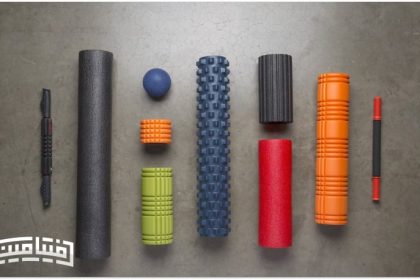Is exercise good for high blood pressure? Blood pressure is one of the vital signs used to evaluate our health. Normal resting blood pressure in adults is defined as approximately “120/80 mm Hg” (or so-called 12 over 8).
High blood pressure increases the risk of heart attack, stroke, and other serious health problems. Most people with high blood pressure have no symptoms. It is important to check your blood pressure at least once every two years from the age of 18. Some people need more frequent and regular check-ups. But which exercise is suitable for high blood pressure?
A healthy lifestyle, such as not smoking, exercising and eating healthy, can help prevent and treat high blood pressure. In this article, we want to talk about the effect of exercise on high blood pressure and introduce suitable exercises for blood pressure.
How does exercise help with high blood pressure?
What is the effect of exercise on high blood pressure? Your risk of developing high blood pressure increases with age, but exercise can go a long way in controlling your blood pressure. You don’t have to run a marathon or spend hours in the gym; Rather, you need to start slowly and incorporate more physical activity into your daily schedule. Exercise will have a positive effect on blood pressure in the following ways:
- Strengthening the heart and improving its performance: Regular physical activity makes your heart stronger. A stronger heart can pump more blood with less effort. As a result, the force on your arteries decreases and your blood pressure decreases.
- weight loss: More movement can lower high blood pressure numbers. Regular exercise also helps you maintain a healthy weight, which is another important way to control your blood pressure. If you are overweight, losing even 2 kg can improve your blood pressure.
To keep your blood pressure in the normal range, you should exercise regularly. It takes about one to three months for regular exercise to have an effect on your blood pressure. Therefore, exercise can be useful and effective for high blood pressure.

What is the best exercise for high blood pressure?
Exercising is good for blood pressure; As long as you choose a suitable sport. In this section, we will introduce some exercises that help reduce blood pressure.
1. walking
Experts believe that one ideal way to fight high blood pressure is to divide exercise into several sessions throughout the day. Lowering blood pressure can be very important immediately after exercise.
In fact, one study found that Three brisk 10-minute walks a day It more effectively prevents future high blood pressure than a 30-minute walk a day.
On the other hand, light walking is also great for high blood pressure. Regular physical activity such as slow walking can significantly lower blood pressure. So we see how effective exercise can be for high blood pressure.
2. cycling
The relationship between exercise and blood pressure is a direct one, and the same reasoning for brisk walking also applies to cycling. Standard cycling will help lower blood pressure.


3. to swim
Another study showed that swimming can also be useful in controlling blood pressure in adults 60 years and older. Over a 12-week period, the participating swimmers gradually increased up to 45 minutes of continuous swimming in a given period of time. By the end of the study, the swimmers had significantly reduced their systolic blood pressure.
Doing moderate exercise for 150 minutes a week is standard. I suggest not to neglect this exercise for high blood pressure!
4. Light strength training
Mild strength training or light dumbbell training can lower blood pressure. Strength training does raise blood pressure levels temporarily, but it can help your overall fitness. This will also improve your blood pressure.
It is important to train with a tailored and specific program that takes into account all your conditions and characteristics. I suggest you consult with vitamin trainers to get a specific exercise program! They adjust and design your program according to your conditions and goals.
Harmful exercises for high blood pressure
In general, it is generally safe to exercise when you have high blood pressure; Because physical activity can help strengthen your heart and naturally lower blood pressure.
A good exercise program will include a combination of aerobic, strength and stretching exercises. However, those with high blood pressure should focus on light to moderate aerobic exercise to help boost their heart health. You should avoid physical activity that raises your heart rate too quickly. If you want to know which exercise is harmful for high blood pressure, see below!
- sprint
Sprinting requires you to expend a lot of energy quickly. This means your heart has to do a lot of work all of a sudden, which can put a lot of strain on an organ that may already be under stress from a lack of oxygen and nutrients. Therefore, you should be careful in choosing your sport! - squash
Squash is another vigorous activity to avoid when you have high blood pressure. One study found that the sport could increase the risk of a ruptured artery, so those with high blood pressure should reconsider squash (and similar sports). - Diving under the sea and jumping from a height
People with high blood pressure should avoid activities such as diving or free falling. Skydiving can increase blood pressure due to the high dose of adrenaline before and during the jump. Diving puts you at risk of organ damage, including the heart and kidneys, which may be impaired by high blood pressure.
Therefore, this exercise is not suitable for high blood pressure at all. If you have the slightest problem, it is important to consult your doctor before participating in these activities.


- High intensity exercise
You should also avoid high-intensity training such as HIIT or heavy strength training; Unless you have a personalized exercise program under the supervision of an expert.
These activities require you to use up a lot of energy quickly and raise your blood pressure. They can increase the risk of heart attack and stroke.
Remember that your heart rate is not always a good indicator of how safe your physical activity is. Some medications prescribed for high blood pressure keep your heart rate lower than normal, while your blood pressure may be elevated.
Does exercise raise blood pressure? Does walking raise blood pressure?
No! Exercise not only does not raise blood pressure, but generally lowers it. But we have to explain this.
During physical activity, systolic blood pressure (the top blood pressure number) temporarily increases to supply the blood flow needed by the exercising muscles; But with regular and long-term exercise, blood pressure generally decreases.
In addition to lowering blood pressure, regular exercise reduces the risk of heart disease, many types of cancer (including breast cancer and colon cancer), diabetes, obesity, kidney failure, osteoporosis, and gallstones. But apart from the physical benefits, exercise is good for your soul as well because it protects your ability to think, improves your mood and prolongs your life.
But you should be careful in choosing exercise for high blood pressure. The good news is that many sports are effective in lowering blood pressure. Aerobic sports such as walking, running and swimming have a greater effect on lowering blood pressure due to improving cardiovascular function and reducing vascular resistance.
We recommend that you consult your doctor before starting any exercise program, especially if you have an underlying medical condition such as high blood pressure.
Important points of care during exercise for people with high blood pressure
As we said, exercise and blood pressure affect each other and often doing exercise for high blood pressure can be useful and effective. But to have a safe activity, you should always pay attention to the following points.
- Amount of exercise: The advice of doctors is that every adult should be moderately active for 30 minutes a day and five times a week. Moderate activity to the point where you feel warm and breathe a little faster, but you should still be able to speak without gasping between words. The right amount of exercise is very important for high blood pressure.
- Adherence to exercise: It may be difficult for you to be active for 30 minutes a day at once. Don’t put too much pressure on yourself and try to keep exercising, stick to it and remember that even a little activity can make a difference.
- Slow start: Set small goals for yourself that are practical. For example, to start, divide your daily 30-minute walk into two 15-minute sessions or three 10-minute sessions.
This will help you to increase your strength and get used to your new activity. Within a few weeks, you will reach 30 minutes of daily walking. - Enjoyable activity: The main thing is to enjoy what you are doing. If exercise is a punishment for you, you are more likely to quit. If you find a sport that you like, you will soon see the benefits and you will most likely stick with it. I suggest you find your favorite sport by testing sports.
- Pay attention to danger signs: If you feel short of breath, have a fast or irregular heartbeat during exercise, slow down and rest. Stop exercising if you feel chest pain, weakness, dizziness, lightheadedness, pressure, or pain in your neck, arm, jaw, or shoulder.
If these symptoms do not go away quickly or recur, call your doctor immediately and seek emergency treatment.
final word
High blood pressure is a common disease that affects the blood vessels in the body. The heart of people with high blood pressure has to work harder to pump blood. One of the ways to reduce blood pressure is to do regular and appropriate exercise.
In this article, we talked about the relationship between exercise and blood pressure and introduced beneficial and harmful exercises for blood pressure. At the same time, we also mentioned the points you should know about exercise for high blood pressure.
Resources: healthmatch – mayoclinic – mayoclinic
RCO NEWS
RCO














